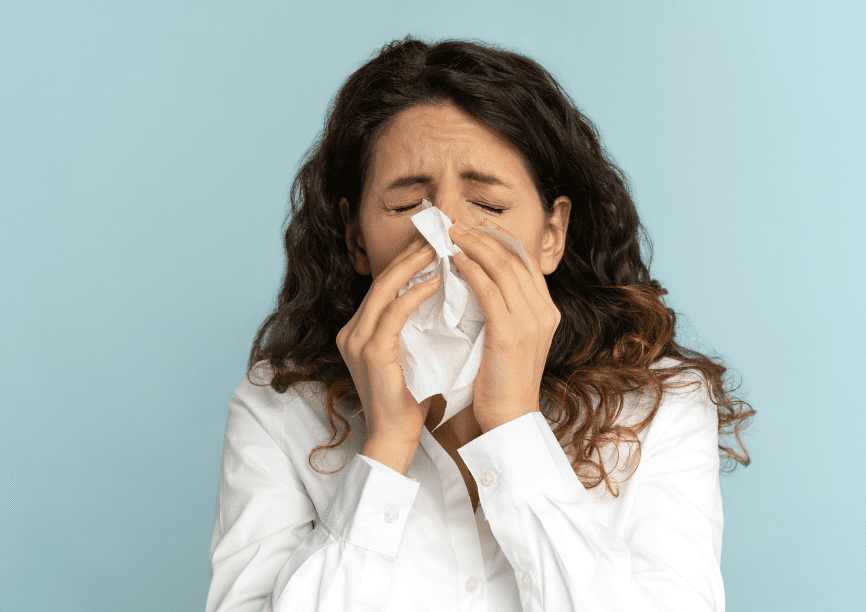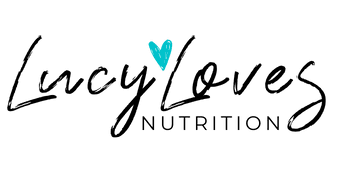
As spring blossoms and grasses fill the air with pollen, millions reach for tissues and antihistamines. But what if the solution to seasonal allergies could be found on your plate? Let’s explore how strategic nutrition might help tame your ‘histamine intolerance’ naturally and provide effective natural hay fever remedies.
Understanding the Histamine (Intolerance) / Hay Fever Connection
When pollen enters your system during hay fever season, your immune system perceives a threat and releases histamine, a chemical that triggers those all too familiar symptoms: itchy eyes, runny nose, sneezing and congestion. The relationship between histamine and allergies is key to understanding how nutritional therapy can help manage symptoms.
It’s important to note that histamine isn’t all bad, it plays a crucial role in our immune system, helping to fight off potential pathogens and regulate important bodily functions. However, when histamine levels become excessive, particularly during allergy season, symptoms can become overwhelming. Many people don’t realise that histamine intolerance and hay fever symptoms can overlap significantly, making it difficult to distinguish between the two conditions. Also, whilst I use the term histamine tolerance it’s actually more of a case of an imbalance or overload.
While over the counter medications provide temporary relief (for some) by blocking histamine receptors, nutritional therapy takes a different approach by supporting your body’s natural histamine regulation and potentially addressing the root causes of histamine intolerance and hay fever.
The Histamine Bucket Theory
Think of your body as having a “histamine bucket” with a certain capacity. When your bucket overflows, from seasonal allergens combined with histamine-rich foods and other triggers, symptoms appear. By managing your overall histamine load through diet, you may be able to prevent this overflow even during peak pollen seasons. This histamine bucket theory explains why some people only experience symptoms when multiple triggers converge.

Nutrition Strategies for Hay Fever Relief
1. Identify and Moderate Histamine-Rich Foods and Promoters
During high pollen seasons, consider temporarily reducing foods that naturally contain higher histamine levels or promote histamine release. Following a low histamine diet in the UK can be particularly helpful during peak hay fever months. These are all high histamine foods or they promote the release of histamine in the body:
- Fermented foods (sauerkraut, kimchi, kefir, kombucha)
- Aged cheeses and cured meats
- Certain alcoholic beverages, particularly wine and beer
- Fermented soy products
- Tomatoes, spinach and aubergine
- Canned and smoked fish
- Leftovers (histamine increases as foods age)
- Avocado, strawberries, citrus fruits
- Coffee and chocolate
This doesn’t mean eliminating these foods entirely – simply being mindful of total consumption during peak allergy periods. Identifying your personal histamine releasing foods can make a significant difference in symptom management.
2. Support Natural Histamine Breakdown & Removal
Your body neutralises histamine through an enzyme called diamine oxidase (DAO). Boost your body’s natural histamine clearance by consuming these foods:
- Fresh herbs like thyme, rosemary, parsley, and holy basil
- Vitamin C-rich foods like broccoli, blueberries, and peppers
- Zinc-containing foods such as pumpkin seeds, fresh lamb, turkey, quinoa
- Copper-rich foods including sesame and sunflower seeds
- B6 sources like fresh wild-caught salmon, chicken, sweet potatoes and butternut squash
- Quercetin-rich foods like apples, red onions, watercress, dill and broccoli
- Consider trying zeolite binders to remove excess histamine
For some people, supplementing with DAO enzyme supplements before meals can also help break down dietary histamine more effectively. These supplements can be particularly helpful during times when you need to balance histamine levels naturally.
3. Strengthen Gut Health
With approximately 70% of your immune system located in your gut, supporting digestive health is crucial for managing allergic responses. The gut health and seasonal allergies connection is increasingly supported by scientific research:
- Include prebiotic fiber from vegetables, fruits, and resistant starches
- Incorporate carefully selected probiotics (look for strains that don’t increase histamine)
- Focus on gut-healing nutrients like omega-3 fatty acids and L-glutamine
- Address underlying gut infections or imbalances working with a healthcare provider
4. Stay Hydrated
Proper hydration helps thin mucus secretions and flush the system:
- Aim for 1.5 to 2 litres of water daily
- Herbal teas like nettle and peppermint may provide additional support
- Consider adding electrolytes for optimal cellular hydration
Creating Your Seasonal Allergy Plan
When implementing nutritional changes for hay fever relief, remember:
- Timing matters: Begin dietary adjustments 4-6 weeks before your typical allergy season starts. Although, following these recommendations could begin to help with symptom relief within a couple of weeks if you’re already experiencing hay fever symptoms.
- Personalisation is key: Food sensitivities are individual, work with a nutritional therapist to customise your approach
- Consistency counts: Small, consistent changes often yield better results than drastic short-term measures
- Track your triggers: Keep a food and symptom journal to identify your specific triggers
- Complement with lifestyle practices: Quality sleep, stress management (cortisol can worsen histamine sensitivity), and appropriate exercise support immune balance
Beyond Diet: Environmental Considerations
While focusing on nutrition, don’t overlook:
- Using air purifiers during high pollen seasons
- Showering and changing clothes after outdoor activities
- Washing bedding weekly in hot water
- Limiting outdoor exercise during peak pollen hours
Personalised Nutrigenomic Approach
As a qualified Lifecode GX nutrigenomics practitioner, I can offer more targeted support through personalised genetic testing. The Lifecode GX histamine test provides unique insights into your genetic predisposition for histamine processing.
This comprehensive genetic testing for histamine intolerance in the UK examines key genes involved in histamine metabolism, breakdown and sensitivity. By understanding your genetic makeup, we can create a truly personalised nutrition plan that addresses your specific biochemical needs, potentially offering more effective relief than generic approaches.
If you’re interested in exploring how your genetics might be influencing your histamine response, I can not only help you purchase this valuable report but also provide professional interpretation and personalised recommendations based on your results.
A Seasonal Approach to Wellness
Rather than viewing hay fever as an inevitable annual struggle, consider it an opportunity to tune into your body’s needs and strengthen your resilience. By adjusting your nutrition seasonally and supporting your body’s natural histamine regulation, you might find yourself enjoying spring’s beauty with fewer symptoms and better overall health. Understanding how to manage histamine levels naturally can be a game-changer for those who experience seasonal allergies year after year. If you feel like you’d benefit from some personalised support with implementing the above recommendations please get in touch and we can arrange a free discovery call to discuss which programme would be the best fit.
This article is for informational purposes only and isn’t intended to replace medical advice. While nutritional approaches can significantly reduce symptoms for many, they’re not a replacement for medical care when needed. Always consult your GP or healthcare provider before making significant dietary changes, particularly if you have existing health conditions or take medications.
